Research Report
TPCI conducts extensive research and analysis of country level & sector level trade data to understand potential and emerging markets and recommends strategies to tap them. Thus our reports would help companies remain competitive in the dynamic business sphere.
October
2024
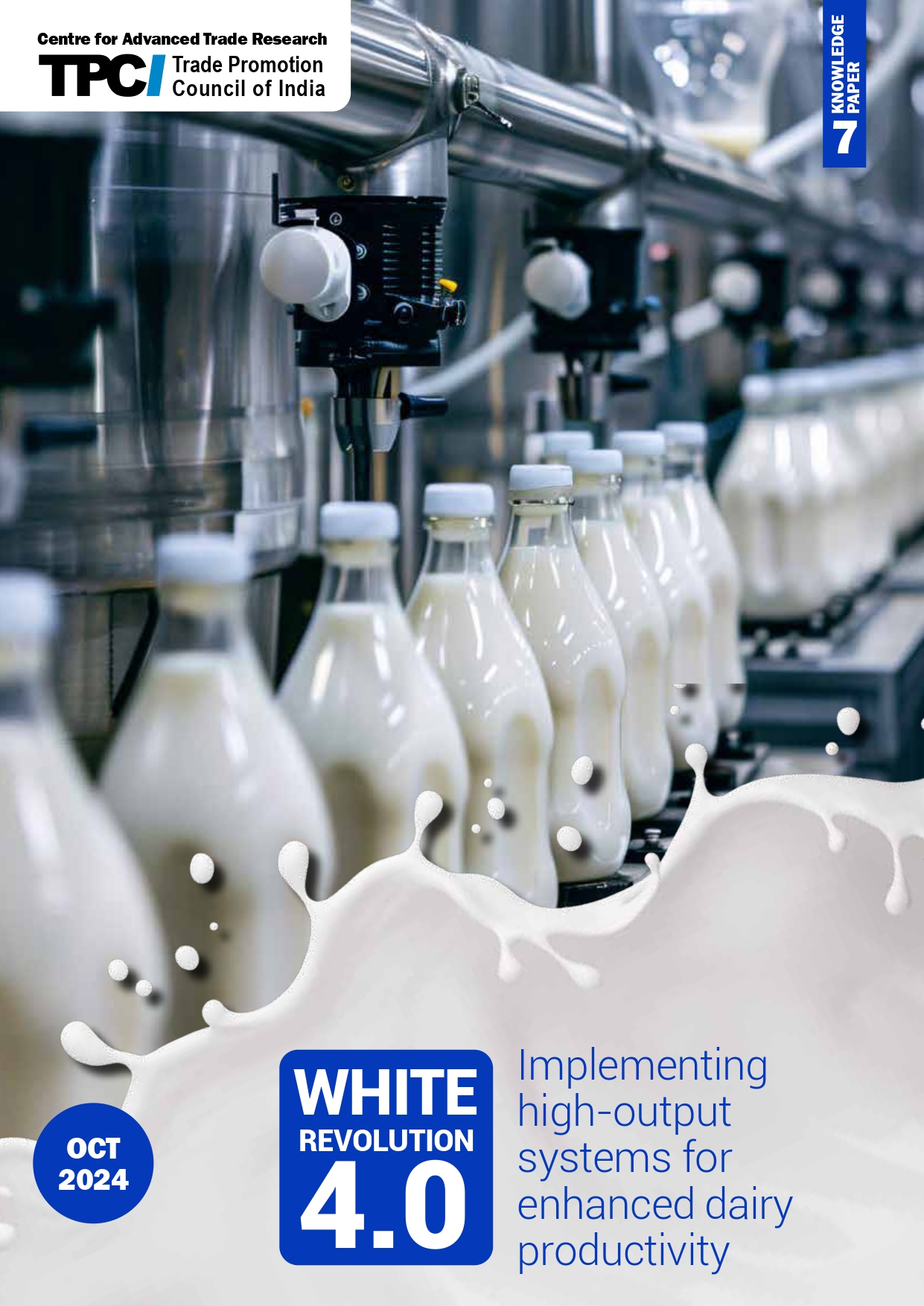
White revolution 4.0: Integrating high output systems for dairy productivity
TPCI's latest research report titled 'White revolution 4.0: Integrating high output systems for dairy productivity' proposes the integration of world-class technologies into the government’s dairy strategy by examining each segment of the supply chain. This study will adopt a multifaceted approach, starting with a comprehensive mapping of the dairy supply chain to identify challenges at every stage — ranging from feed production and veterinary care to milking, processing, and distribution. Key areas of analysis will include feed quality, herd management practices, milking technology, and cold chain logistics.
June
2024

Sustainable technologies in the F&B sector
The F&B industry plays a vital role in the economy by adding value to agricultural commodities, generating revenue, and supporting related industries such as packaging, logistics, and hospitality. Furthermore, it plays a critical role in ensuring food security and nutrition for India's growing population. By producing, processing, and distributing a diverse range of food products, the sector helps meet dietary needs, improve nutritional outcomes, and reduce hunger and malnutrition in the country.
Sustainability is a critical challenge for the agricultural sector, to resolve major issues like resource conservation, climate change mitigation, food security and resilience, consumer demand, and regulatory compliance & market access. In this latest research report, TPCI examines the criticality of sustainable technologies in the F&B sector, and examines five such critical and promising technologies that are catalysing the sector's path to sustainability, from farm to fork.
March
2024
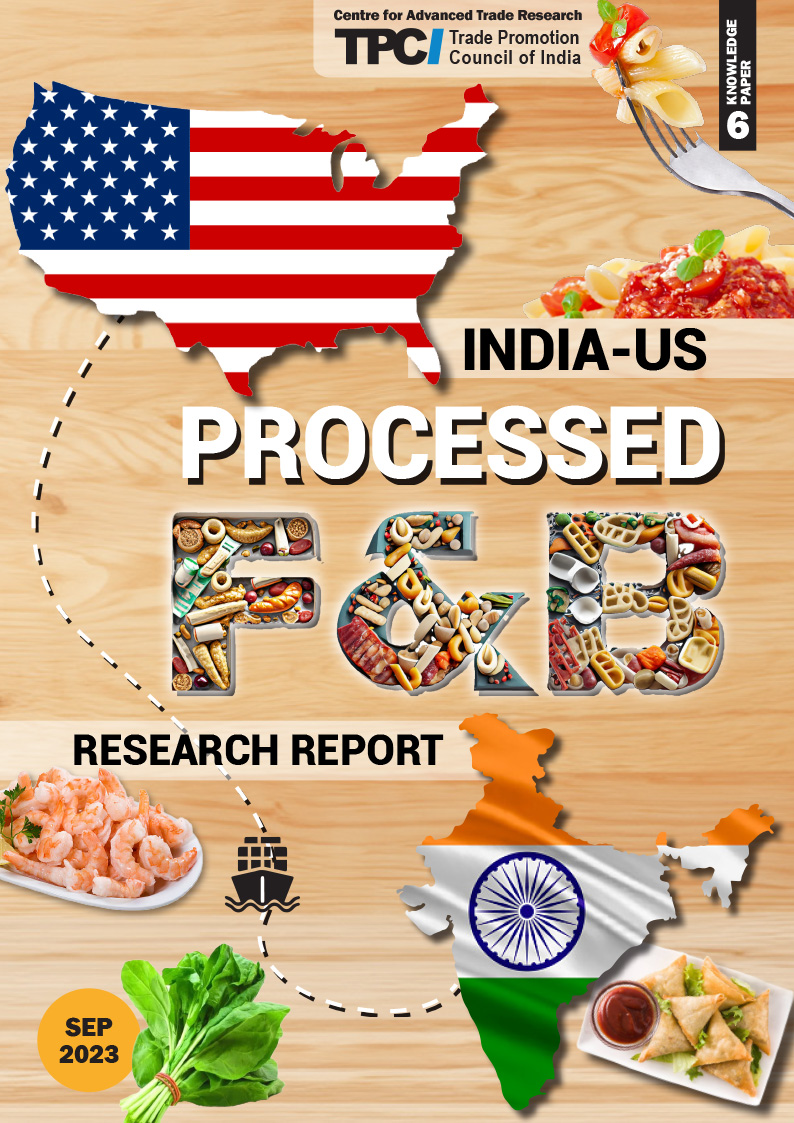
India-US processed F&B exports
India and the US share a vision of trust and mutual understanding, with the four million-strong Indian American diaspora and robust educational exchanges acting as pillars of strength for their strategic alliance. Both countries place significant importance on their Food and Beverage sector, fostering cultural ties and economic growth through the exchange of culinary traditions, agricultural products, processed foods, and beverages.
In fact, India is showing strong growth trajectory in a number of processed food segments. If industry targets just raising its share from the present 1.5% in US Prepared Food Stuff imports to around 5%, it can raise its US exports to nearly US$ 5 billion. The Research team at The Trade Promotion Council of India (TPCI) conducted a detailed analysis to explore and assess the potential of Indian Processed and Prepared food products within the US market.
September
2023

India’s import dependence in solar PV A research report by Trade Promotion Council of India
The TPCI research team initiated a deep dive into the value chain of the solar energy sector, with a special focus on solar PV. The report endeavours to provide a comprehensive understanding of India’s current import dependence, export trends and prospects in the coming years. The team further engaged with industry members to understand the major challenges and suggestions for strengthening India’s solar PV manufacturing capabilities and capitalising on the recent surge in exports.
June
2023
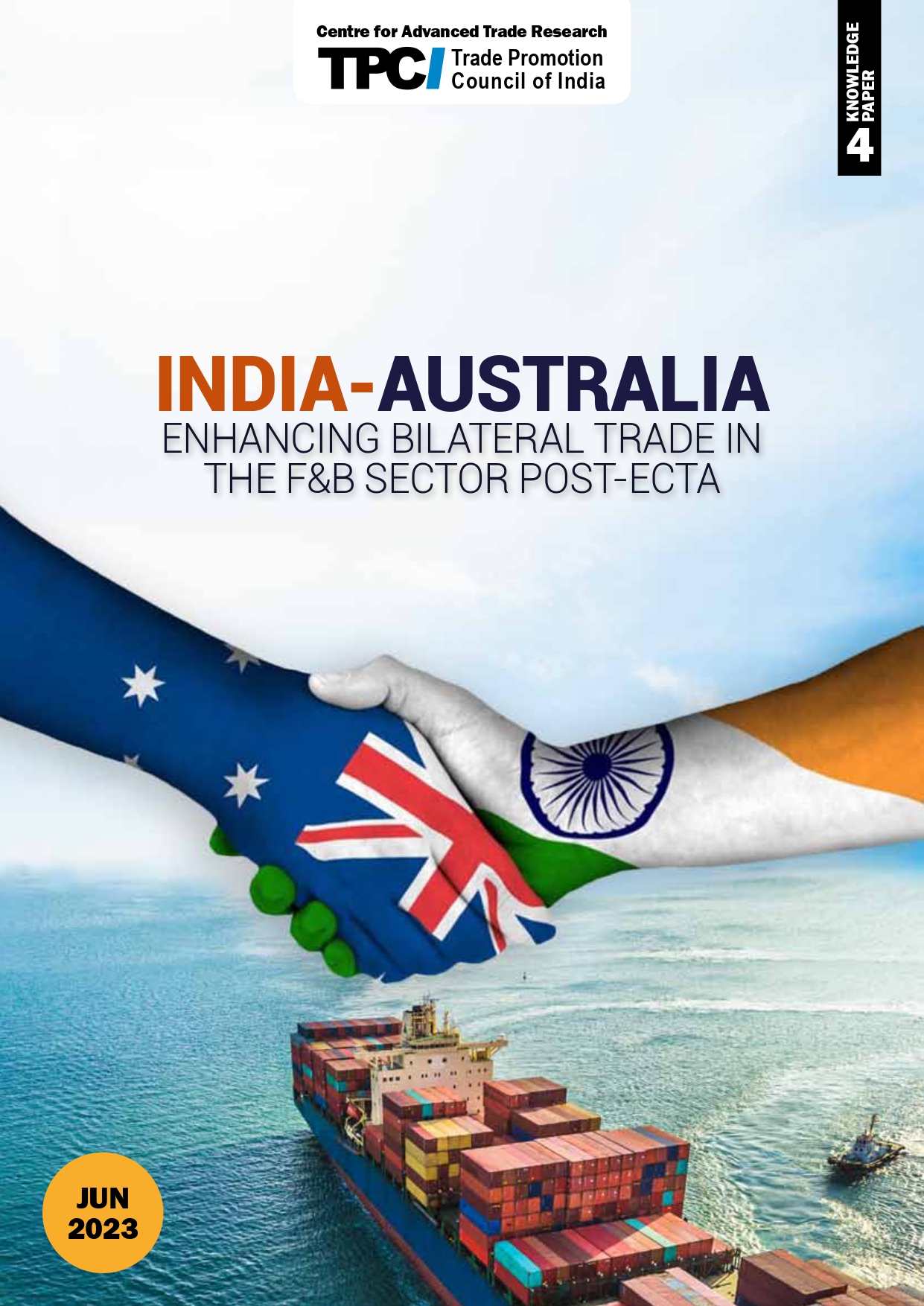
Enhancing India-Australia Bilateral F&B Trade post-ECTA
Trade Promotion Council of India analyses trade and investment opportunities for Indian companies in Australia, with special focus on Food and Beverage sector. Apart from assessing the potential impact of the Economic Cooperation Agreement (ECTA), the report incorporates industry consultations and expert suggestions to enhance bilateral trade and investment relations in the sector.
February
2023
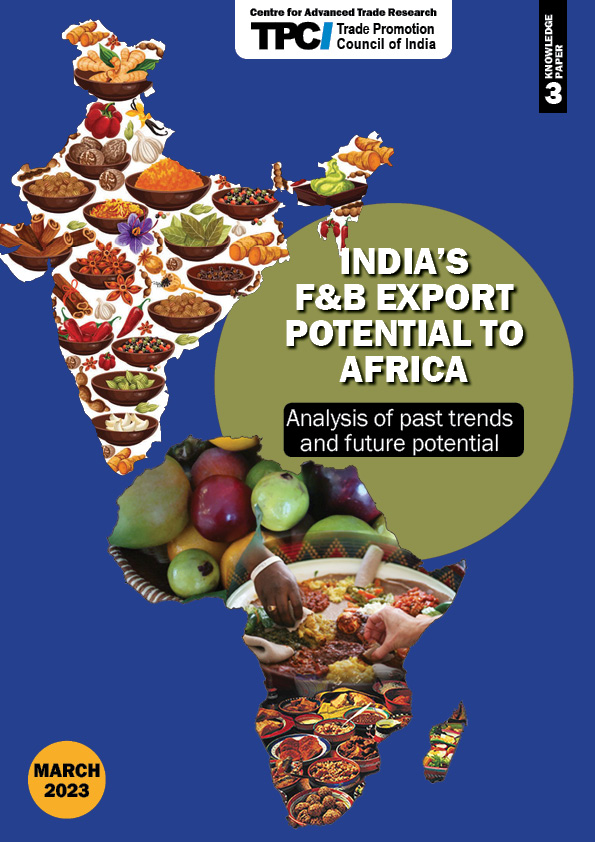
India’s F&B export potential to Africa: Analysis of past trends and future potential
Trade Promotion Council of India analyses the dynamics of India-Africa trade, as well as the leading products and markets that are driving its growth. It also examines export growth opportunities, competitive landscape, market-specific challenges and key initiatives that will help drive India's F&B exports to Africa.
October
2022
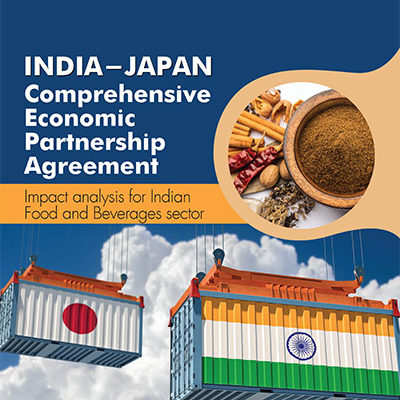
Impact of India-Japan CEPA on the F&B Industry & Lucrative Business Segments: TPCI Report
This paper titled 'India-Japan Comprehensive Economic Partnership Agreement - Impact analysis for Indian Food and Beverages sector', analyses the trends in trade flows between India and Japan in the F&B sector and how these were impacted with the implementation of the India-Japan Comprehensive Economic Partnership Agreement (CEPA). Specifically, the paper analyses India’s exports to Japan at the disaggregated level in the period before and after implementation of the CEPA for specific commodities of India’s trade interest. It delves into issues of concern on the Indian side and the measures needed to improve trade flows.
September
2022
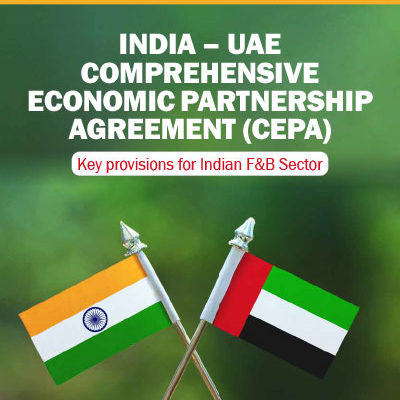
India-UAE CEPA: Provisions for Indian F&B Sector
TPCI presents a brief summary of the significant provisions made under the Agreement for promoting and enhancing exports of commodities in the Food and Beverages sector. This is in view of preferential market access to the UAE market upon the implementation of the CEPA. The report includes the Key Features of the CEPA and the Product Specific Rules (PSR) related to Food and Beverages products.
October
2021
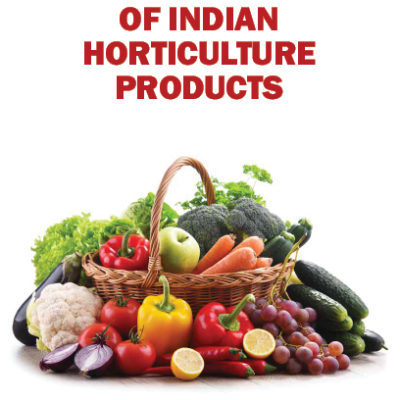
Global market expansion of Indian horticulture products
India's outperformance in terms of production in horticulture products has not manifested itself into export performance of the sector. To investigate factors responsible for this contrast in terms of production and exports, this report analyzes India’s competitiveness in horticulture products, and barriers faced by the sector while also providing recommendations to improve the domestic scenario and thus boosting exports.
May
2021
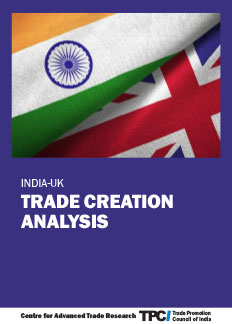
India-UK: Trade Creation Analysis
CATR analyses prospects that a prospective trade deal between India and UK will unfold for both the countries. The research brings out key product categories for India with export potential to the UK, current trade roadblocks as well as the projected growth in India's exports if barriers are brought down under a trade agreement.C
February
2021

A glimpse into Inorganic Chemical Industry
Globally, India is the 6th largest producer of chemicals, with inorganic chemicals constituting 1/3rd of its total production. This report by Centre for Advanced Trade Research (CATR), provides an insight into India’s inorganic chemical industry, specifically focusing on domestic production & consumption, key segments, end-use sectors driving growth, trade trends, barriers and global price competitiveness.
September
2019

India’s trading opportunity with Tunisia.
Tunisia appears to be a stagnant economy in terms of GDP growth and imports growth in goods and services. This report, in an attempt to bolster trade between India and Tunisia, has identified a list of products and services that hold the potential of steering trade growth. Other than this product- based identification, India must also look at the future policy agendas of Tunisia, and align its trade negotiations with Tunisia’s long term goals. For example, the country in its 2020 roadmap stresses heavily on building and renewing transportation- rail and road, bridges and stations, metro rail networks. Similarly, infrastructure opportunities exist in water desalination plants and related pumping stations and supply network. This agenda of the Tunisian government offers two opportunities to India- one, supply of raw materials and two, advisory services. After all these economic considerations, one must understand the political story of Tunisia, such as its young democracy, small private sector, presence of terrorism, and most importantly, its financial dependence on developed world.
September
2019

Analysis of Canadian Imports- An Indian Export Prospect, 2016
The report explores products (agricultural and non-agricultural) in which India has substantially large export potential to Canada, considering India’s huge production base of the specific commodities and the huge demand for the same in Canada. Although Indian exports to Canada has been increasing year on year, the major share is occupied by USA, Mexico, European Union and China. The reasons for India’s low share in Canada’s imports include high tariffs imposed, high freight and transportation costs and also several SPS and TBT measurers enforced by Canada. The report consider those product categories, especially Indian food and agricultural products, in which India has a competitive production edge over other competitors. Since India is not able to comply with quality standards and norms of Canada, it is not able to export these products in large quantities to Canada.
September
2019

China’s Slowdown and India’s Opportunity – Agrarian and Non-agrarian Perspective 2016
The study focuses on how India can tap the top export destinations of China such as USA, Japan, South Korea and Vietnam as with weakening Chinese position in the global market. After 2010, the Chinese Economy suffered a continuous decline in growth rate of GDP, imports as well as exports. The downturn is evident from the fall in the growth rate from an average of 9.9% for 2005-14 to 6.9% in 2015. The decline in growth has spillover effects over the world and also on the Indian sub-continent. Since India is one of the fastest growing economies in the world, it becomes an opportunistic situation for Indian exporters to capture the markets lost by Chinese industries This would not only help increase India’s exports but also help in the revival of consumer demand in the world, amidst the global economic glut.
September
2019
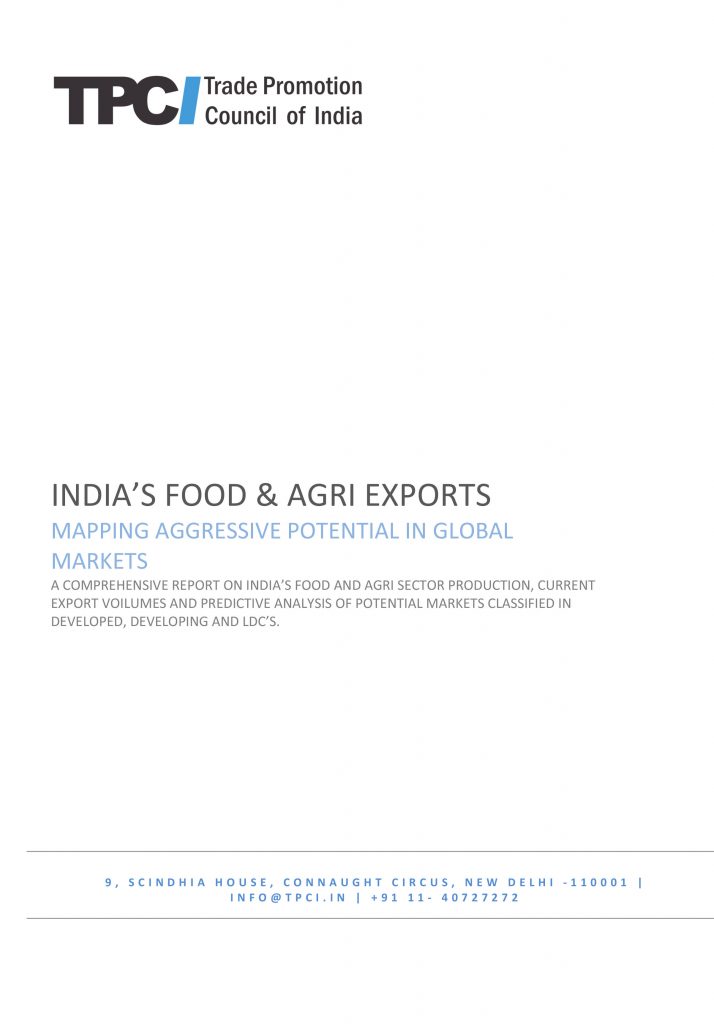
India’s Food & Agri Exports – Mapping Aggressive Potential In Global Markets, 2016
In this study importance of processed food and agricultural products has been highlighted by studying the trade structure of top 20 processed products as per India’s competitiveness. We have highlighted the lag in export despite the competitiveness and existence of significant trade values and justifying the same by listing the top crucial or aggressive Processed Agricultural Food and Allied Products.
September
2019
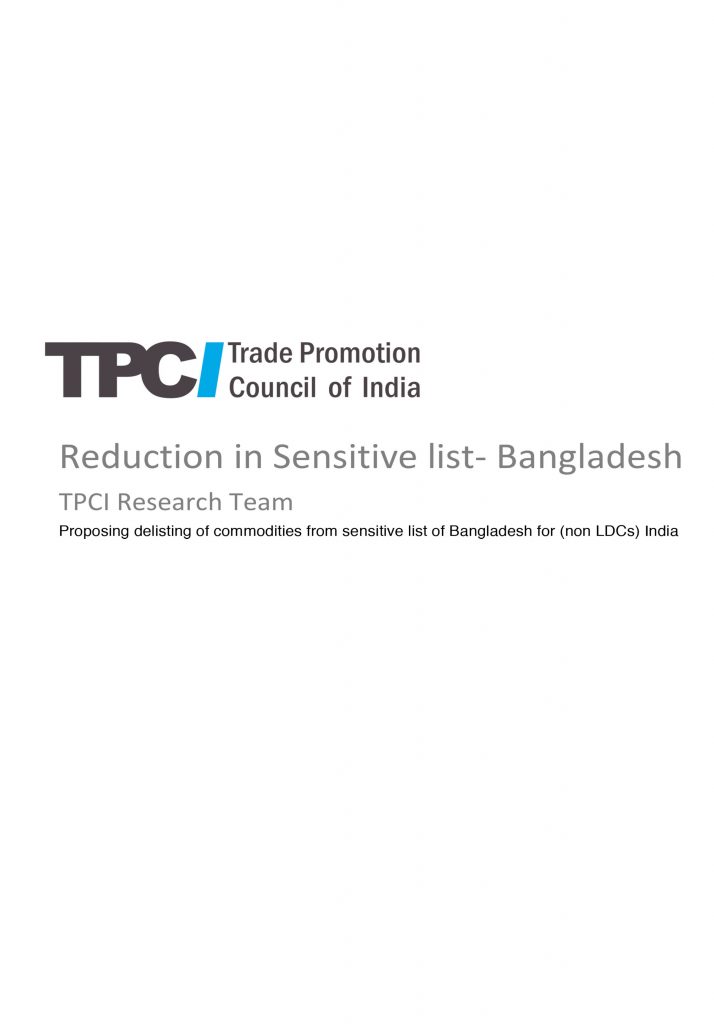
Reduction in Sensitive list- Bangladesh, 2016
This paper aims to recognize the items to be proposed to be pruned from the sensitive list maintained by Bangladesh for non-LDCs (India), after analyzing the commodities presently considered in the list, based on supply-demand, competitive pricing, geographic advantage (transportation cost) and RCA mxechanism. It has been figured out that 18 non textiles related commodities and 6 textiles related commodities should formidably be considered to be removed from the list, out of the 34 non-textiles and 17 textiles related high potential commodities recognized through the study.
September
2019
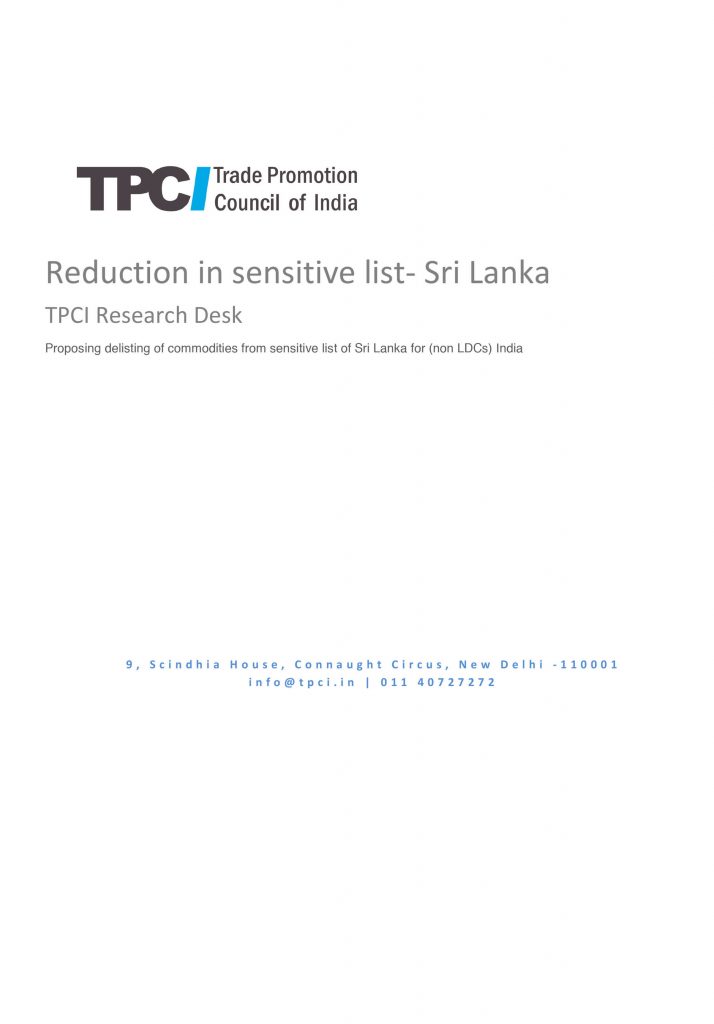
Reduction in sensitive list- Sri Lanka, 2016
The study suggests an approach to reduce Sri Lanka’s sensitive list under SAFTA. The concept of Revealed Comparative Advantage has been used to pair the RCAs for products on Sri Lanka sensitive list with the corresponding RCAs of India. Four categories of items are generated based on competitiveness of India or Sri Lanka on each of the items. This process helps in identifying items in which Sri Lanka is competitive and those where the India is not competitive. Such items are recommended for removal from Sri Lanka’s sensitive list. Items that are vulnerable to competition include those items where the India is competitive but Sri Lanka is not. Such items can remain on the sensitive list and can be removed gradually in a phased manner.
July
2017
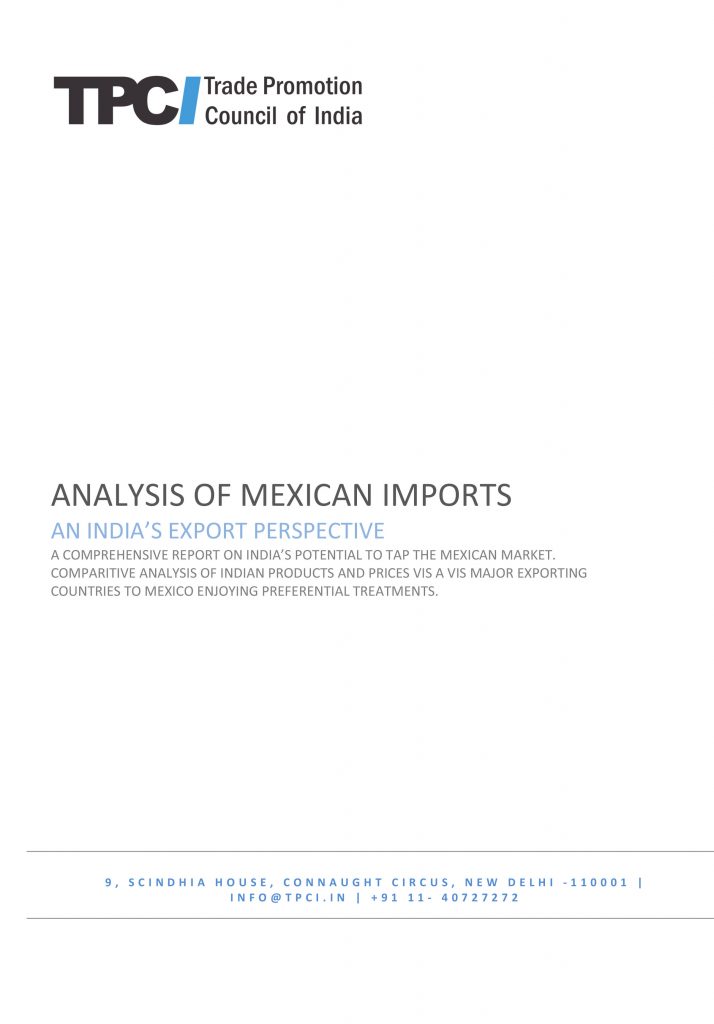
Analysis of Mexican Imports – An India’s Export Perspective, 2016
This report figures out the potential of Indian exports for Mexican markets mainly focusing to tap manufacturing products which has high value addition and thus can escalate India’s exports. As the economic scenario of Mexico is improving, India has an opportunity of strengthening the trade relations with Mexico especially focusing on exporting Indian manufacturing products which already has presence in Mexican markets. Moreover Chinese economy is dwindling with lowest levels of global exports amalgamated by huge debt to GDP ratio and so far the lowest levels of growth rate in GDP.
